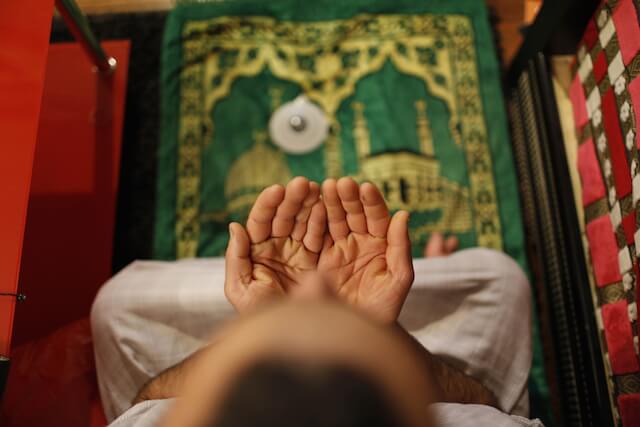As COVID-19 continues to pose a threat worldwide, mosques will remain closed for Taraweeh during the holy month of Ramadan. As a result, Muslims will not be able to pray Taraweeh at mosques during the holy month.
One of the most significant practices of Ramadan, Taraweeh is a congregational sunnah or non-obligatory prayer performed after the ‘Isha or evening prayer every night during Ramadan. Taraweeh means rest or relaxation. It is believed that those who observe the optional prayer throughout Ramadan, ‘out of sincerity of Faith and in the hope of earning reward, will have his past sins pardoned’. At the mosque, men and women pray Taraweeh, led by the imam, the worship leader in a mosque. However, the prayer can be performed at home.
Decide how many Rak’at you are going to pray
Before praying ‘Isha, decide how many rak’at you are going to pray for Taraweeh. A rak’ah (rak’at; plural) is a unit of prayer. It’s up to you how many rakat you would like to pray during Taraweeh. It could be anything from eight to 20 rak’at. Following the sunnah (sayings and practice of Prophet Muhammed), ensure to pray your rak’at two-by-two, and conclude it with the Witr prayer. It was narrated by one of the companions of the Prophet that ‘he performed the night prayer in pairs (i.e. rak’at) and made it odd number by observing one rak’ah (as Witr)’. The Prophet prayed eight rak’at of Taraweeh and three rakat of Witr.
Decide whether you will read from the Quran or memorisation
Taraweeh is a long prayer, that could last up to an hour and usually read by an imam who has the complete Quran memorised. The challenge of praying Taraweeh at home is for those who have not memorised the Quran. However, you could keep the Quran open and read during prayer. It’s up to you!
Begin by praying ‘Isha
The Taraweeh prayer begins with the ‘Isha prayer, which consists of four rak’at, and then followed by additional rak’at for Taraweeh.
Continue praying two-by-two until you are satisfied
Once you’ve decided how many rak’at you’ll perform and once you’ve prayed ‘Isha, begin praying Taraweeh with as many rak’at as you are comfortable with. People commonly pray nine, 11 or 13 rak’at (including Witr), but you can perform more or less. Make sure to say tasleem between each unit. Regarding the night prayers, ‘Your Lord knows that you sometimes stand up in prayer nearly two-thirds of the night, and sometimes half or one-third of it… Recite, then, [only] as much of it as you may do with ease’.
Conclude the Taraweeh with the Shafaa and Witr Prayer
The Shafaa and Witr are non-obligatory Islamic prayers that are to be recited at night time.
When praying Taraweeh, once you’ve prayed your two-by-two rak’at, you need to round it all off by praying a two rak’at of Shafaa and a raka’h of Witr. For example, if you pray 12 rak’at of Taraweeh, then conclude with two rak’at of Sahfaa, followed by one rak’at of Witr to make it 15 rak’at in total.
In addition to praying on your own at home or with family, you may follow online prayer guides or tune in to Qatar’s Quran Radio 103.4 FM and follow the Taraweeh prayer.
RELATED STORY: Call to Prayer Sounds Different. Here’s Why!
Copyright © Marhaba Information Guide. Reproduction of material from Marhaba Information Guide’s book or website without written permission is strictly prohibited. Using Marhaba Information Guide’s material without authorisation constitutes plagiarism as well as copyright infringement.






